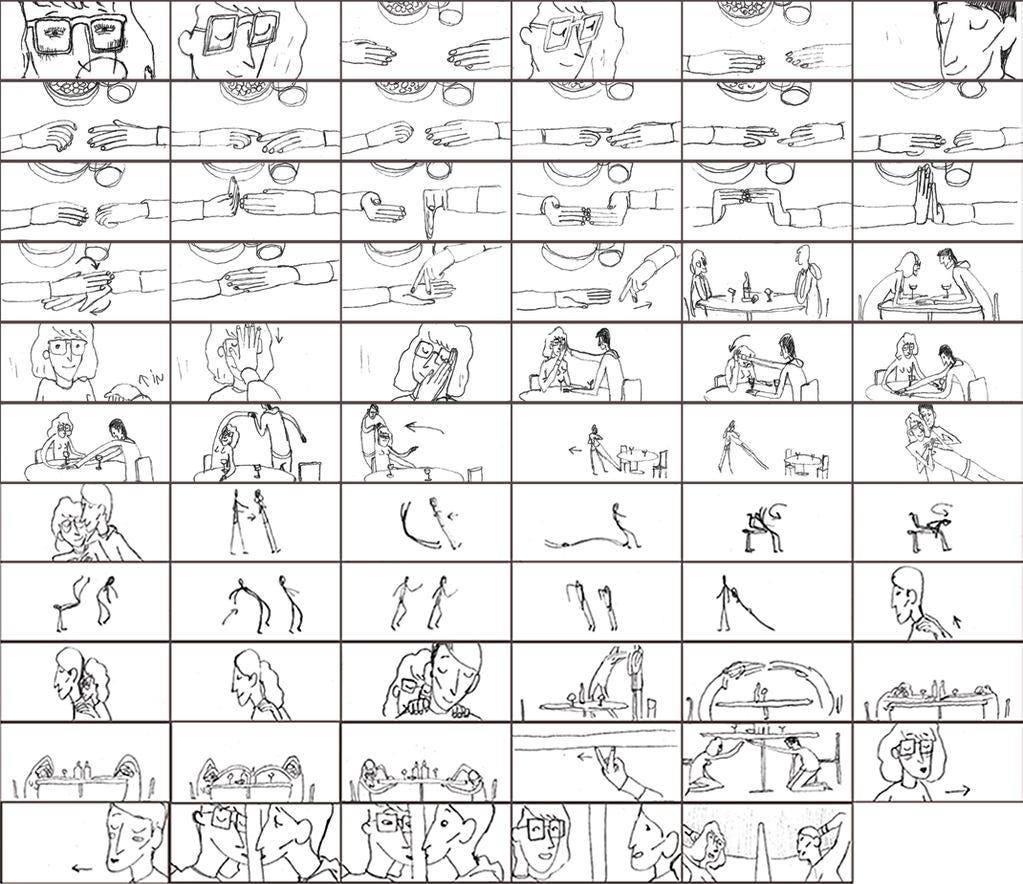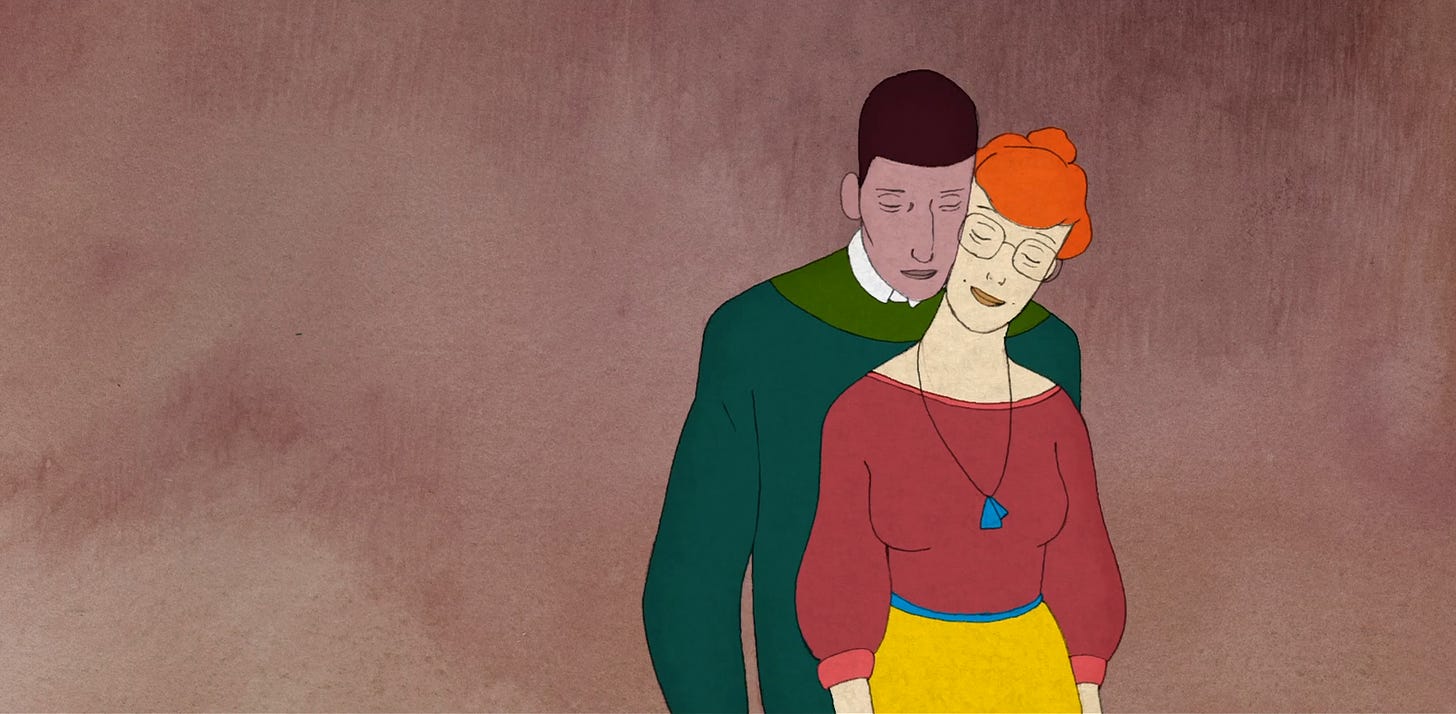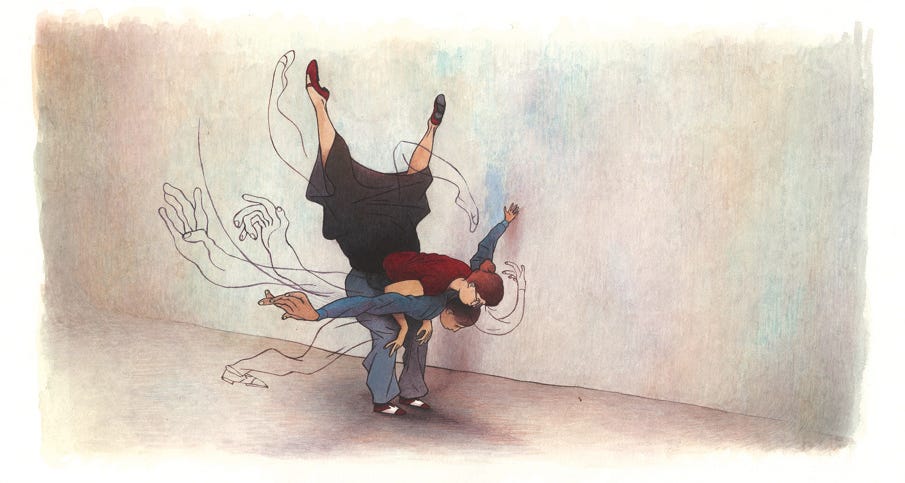This issue originally appeared behind a paywall on December 9, 2021. As a special for the month of February 2022, we’re making it available to everyone.
We’re back! This is the 15th bonus issue of the Animation Obsessive newsletter. Counting today, we’re only four Thursdays away from the end of the year. We’re scrambling to prepare for the holidays — and for the start of 2022.
But, for a moment, let’s set that aside. Our subject today is dance. Specifically, we’re looking at how dance weaves itself into the films of Jean-Charles Mbotti Malolo, one of the most exciting voices in French animation right now.
Mbotti Malolo is an artist, dancer and choreographer, and all three come together in his work. He’s been developing his style since at least 2007 — starting with an acclaimed student film. Last year, he received a César nomination for his project Make It Soul. He’s only been rising since.
Enjoy!
When it comes to animating dance, there’s a temptation, felt by many animators, to flex. There’s nothing inherently wrong with that. The joys of watching a technical master at work are real. But it’s a mistake to think that technique alone can capture the fullness of dance.
Truly great dance animation is about feelings, character and story. It’s specific, purposeful. It sticks with you because it says something, just as a great dancer speaks through a routine. Even if a dance sequence doesn’t use full animation, or the flashiest camera angles, what matters far more is whether it communicates.
This is why our favorite animated dance sequence in recent years comes from The Sense of Touch, a small film directed by Jean-Charles Mbotti Malolo:

The Sense of Touch, which is on Vimeo, is a 14-minute film about romance without words. Its protagonists are deaf. Mbotti Malolo took pains to immerse himself in their world, studying sign language and blending it into modern dance. He consulted the deaf actress Emmanuelle Laborit, hired a deaf performer to do voice-over work and employed beautifully unique sound design that expresses the many sides of deafness.
Dance, and its physicality, is the core of it all. It’s a language of touch — which the characters speak throughout the film. Even when they aren’t explicitly dancing, they’re choreographed. (You can see some awesome footage of Mbotti Malolo directing the dancers used as reference.)
When it came out in 2014, The Sense of Touch solidified Mbotti Malolo as a genius of animated dance. But it wasn’t supposed to turn out that way. Actually, he’d gone into the film trying to keep dance out of the equation. His graduation project, The Heart is a Metronome (2007), had won a top award at the Hiroshima International Animation Festival by telling a story through dance. Mbotti Malolo wanted to branch out.
“I didn’t want to be stamped as ‘the guy who makes animation with dance,’ ” he told Le Petit Bulletin. The problem was that dance kept creeping back into the film. In the end, he said, The Sense of Touch became an “involuntary” dance film. He came to accept it.

Mbotti Malolo, born in 1984 to parents from Burgundy and Cameroon, comes from outside the mainstream of French animation. He wanted to attend the prestigious animation school Gobelins, but said that he “had no financial resources to live in Paris” and didn’t want to leave home. He stayed in his birth city of Lyon, studying animation at the Émile Cohl art school — which he took out a hefty loan to afford.
Dance was always there alongside his art. He told Format Court that he has “forever slipped from dancing to drawing,” and his creative process involves both. Hip hop culture — graffiti and dance — were key to his development. He’s even worked in dance companies and collaborated with the Pockemon Crew.
These elements first merged in The Heart is a Metronome at the suggestion of a teacher, Benoît Chieux. Mbotti Malolo took his advice and crafted a moving story about an estranged father and son, only four minutes long but full of feeling. It might be a graduation project, but the story it tells, and the way it tells it, absolutely carries through:
After Metronome, Mbotti Malolo entered the French animation industry, working as an artist on films like Aunt Hilda. In the meantime, though, his more personal work continued. It took from 2009 to 2014 to make The Sense of Touch, and its 2011 pitch document makes the reasons clear: he put a ton of thought and care into every part of the project.
The film remains underrated, although it did receive a major nomination at Annecy. It’s the type of piece that could easily reach a wide audience, but hasn’t yet.
Mbotti Malolo has said that it took another four years to make his next big film, his most-ambitious and best-known so far — the visually mind-blowing Make It Soul. He started researching it in 2014, and the final, 15-minute piece would finally drop in 2018. It’s about soul musicians Solomon Burke and James Brown.
Although Make It Soul covers one of the 20th century’s most famous dancers, it doesn’t approach its subject in an obvious way. Some viewers, Mbotti Malolo said, expected to see more of Brown’s dancing. And he does dance. The thing is, though, that the director’s goal wasn’t simply to portray dance. He wanted to infuse dance into every aspect of the film. “What interested me was to make the mise en scène dance,” he said.
“Dance can be disembodied.”
Mbotti Malolo storyboarded the film solo, taking special care with the camera movement and transitions. Like with The Sense of Touch, it isn’t a film about flash, even when it’s flashy. He uses dance to communicate, even when the dance is buried inside the filmmaking. As he said during a TONKOCAST interview:
I didn’t want it to have this huge camera movement or these huge dancing parts just because I wanted to kick people in the face and be like, “Boom!” [Where] it’s, like, technical and stuff. I just felt like, “Okay, this story needs a setup and this story needs some ways to tell it.” [...] I tried to find the right flow.
The French comic artist Simon Roussin served as the art director, which allowed Mbotti Malolo to loosen up. The team colored Make It Soul with cheap physical markers in around two weeks, leaning into the imperfections on purpose. It was all part of putting soul into the film — the colors themselves dance.
Make It Soul culminates in a moment where Brown upstages Burke. You feel Brown’s dancing not just through the motion, which is impressive, but through everything. By the end, Brown isn’t dancing in any traditional sense — we see him from Burke’s perspective, a massive wave crashing over the audience and washing away his rival. It’s a stunning scene:

In its own way, this sequence shows again that animating dance goes much deeper than moving characters around the screen. It’s deeper than a technical display of motion. Capturing how dance feels, and what it means, requires an animator to dig into the inner world.
Mbotti Malolo remains active in French animation — just this year, he designed the poster for Annecy. He’s started teaching young animators at the Émile Cohl art school. While he’s been far from prolific as a filmmaker, he’s built a name through the quality of what little he’s made. Even Waves, his one-minute contribution to the anthology 36,000 Years Later (2015), vibrates with life.
He’s moved away from dance, a bit, in his latest project. Ex Aequo! is a French documentary series about discrimination in sports, mixing animation with live footage. Mbotti Malolo is the showrunner. It might not be about dance, but his energy is felt in the animation for the series. (See some here.)
Still, it’s hard to believe that Mbotti Malolo is done with dance animation. After Make It Soul’s nomination last year at the César Awards, the so-called French Oscars, his vision has never been closer to breaching the mainstream. He’s said in recent years that he’s contemplating a feature film. Whatever he does next, we’re excited for his future.
Thanks for reading! That’s the end of our issue today. We hope you’ve enjoyed this look at Mbotti Malolo’s wonderful artistry.
As we move toward Christmas, we’ve got a few fun issues scheduled for the coming weeks. One of them, we can tease now, is a planned dive into a certain film by Satoshi Kon. We’re looking forward to sharing it!
See you again soon!





These pieces were incredible. Very unlike work I've seen before. And that "Make it Soul" excerpt—wow. I must have watched it three times back to back! These are going straight to the "inspiration" archive for frequent reference 🙏